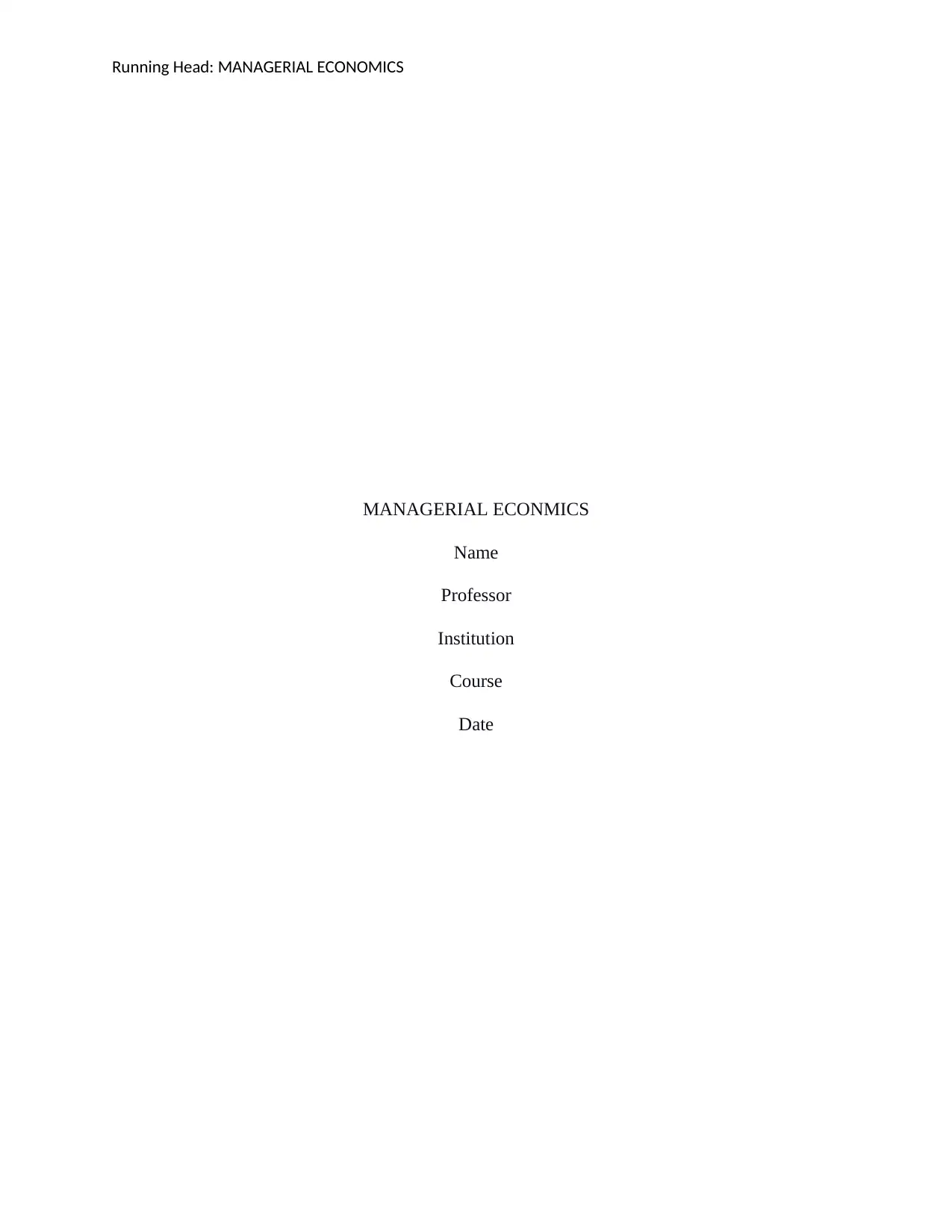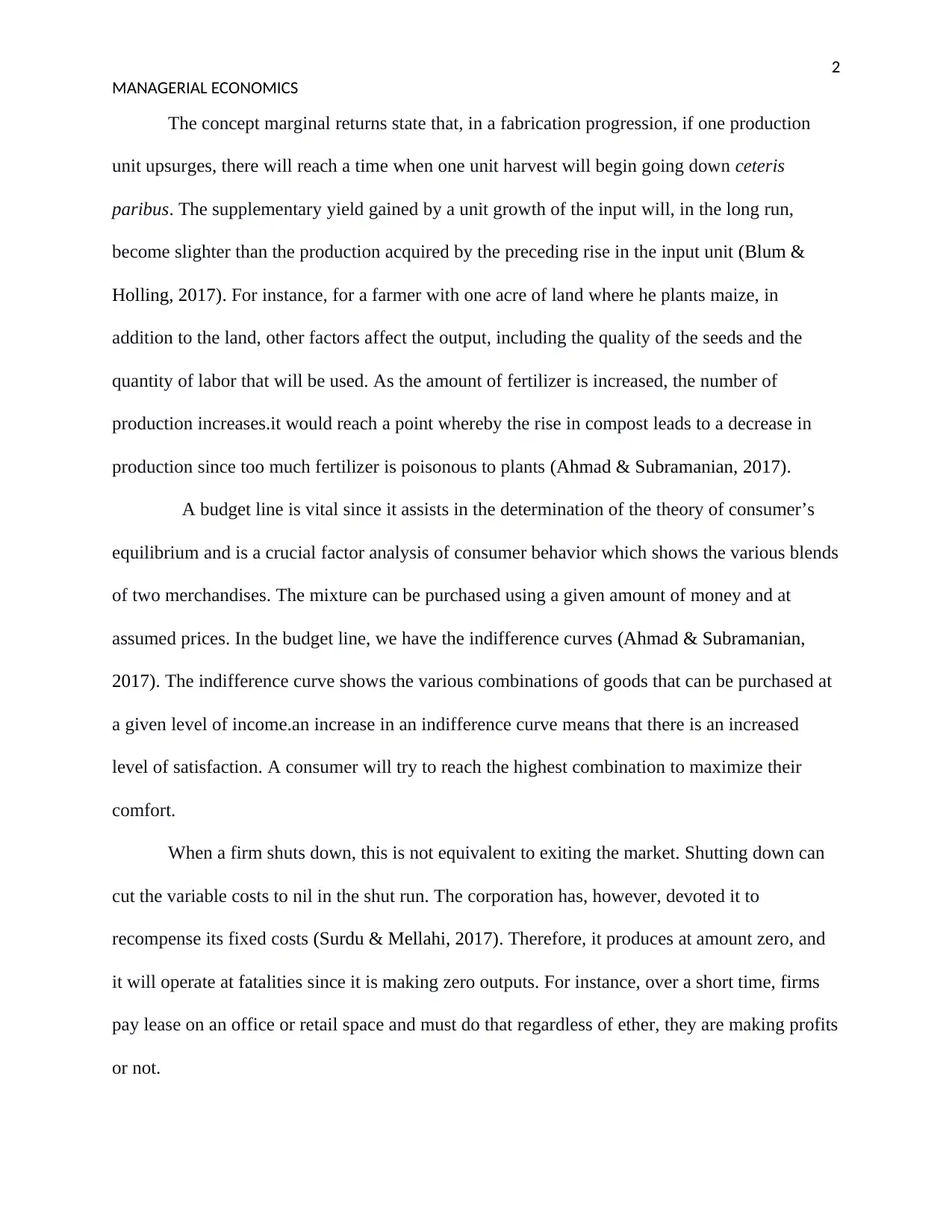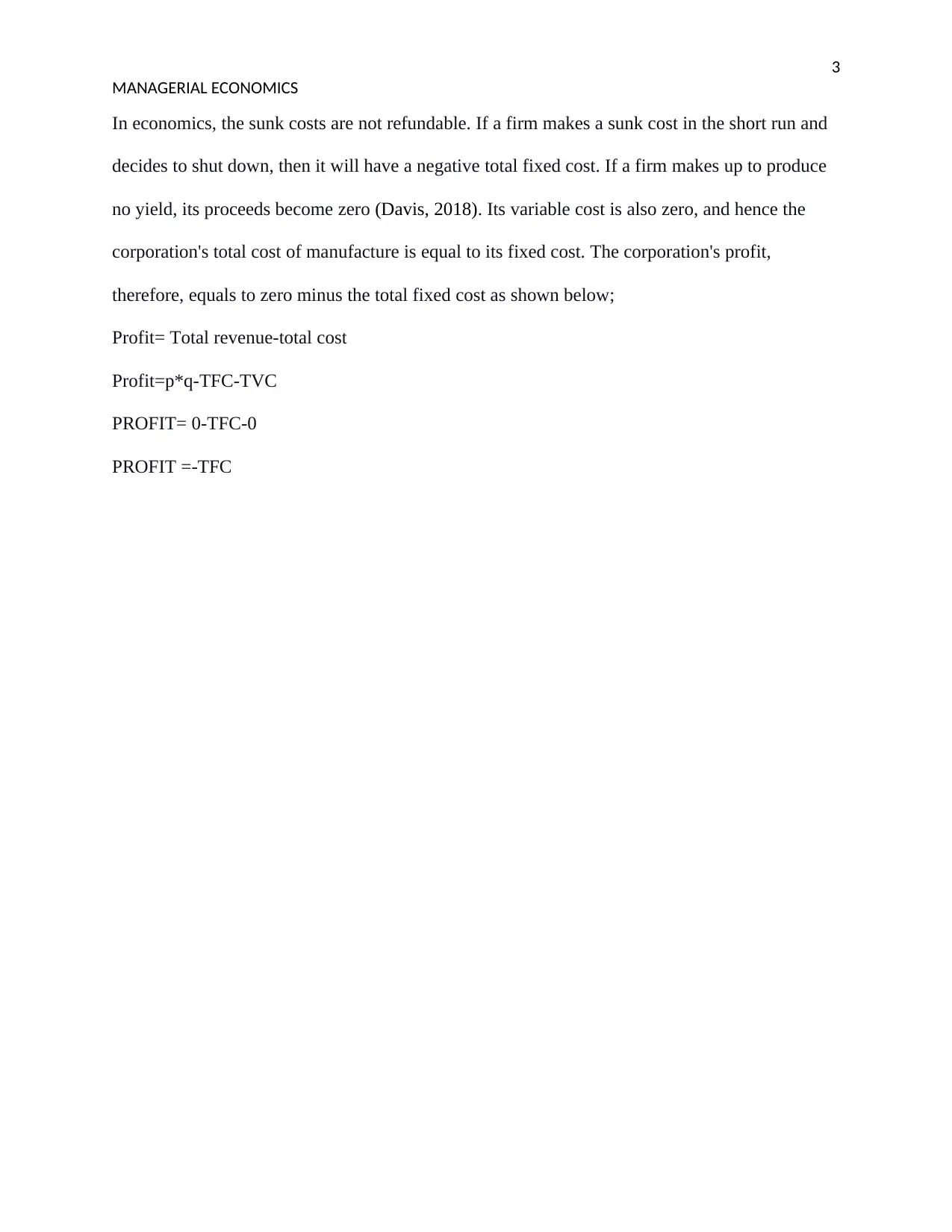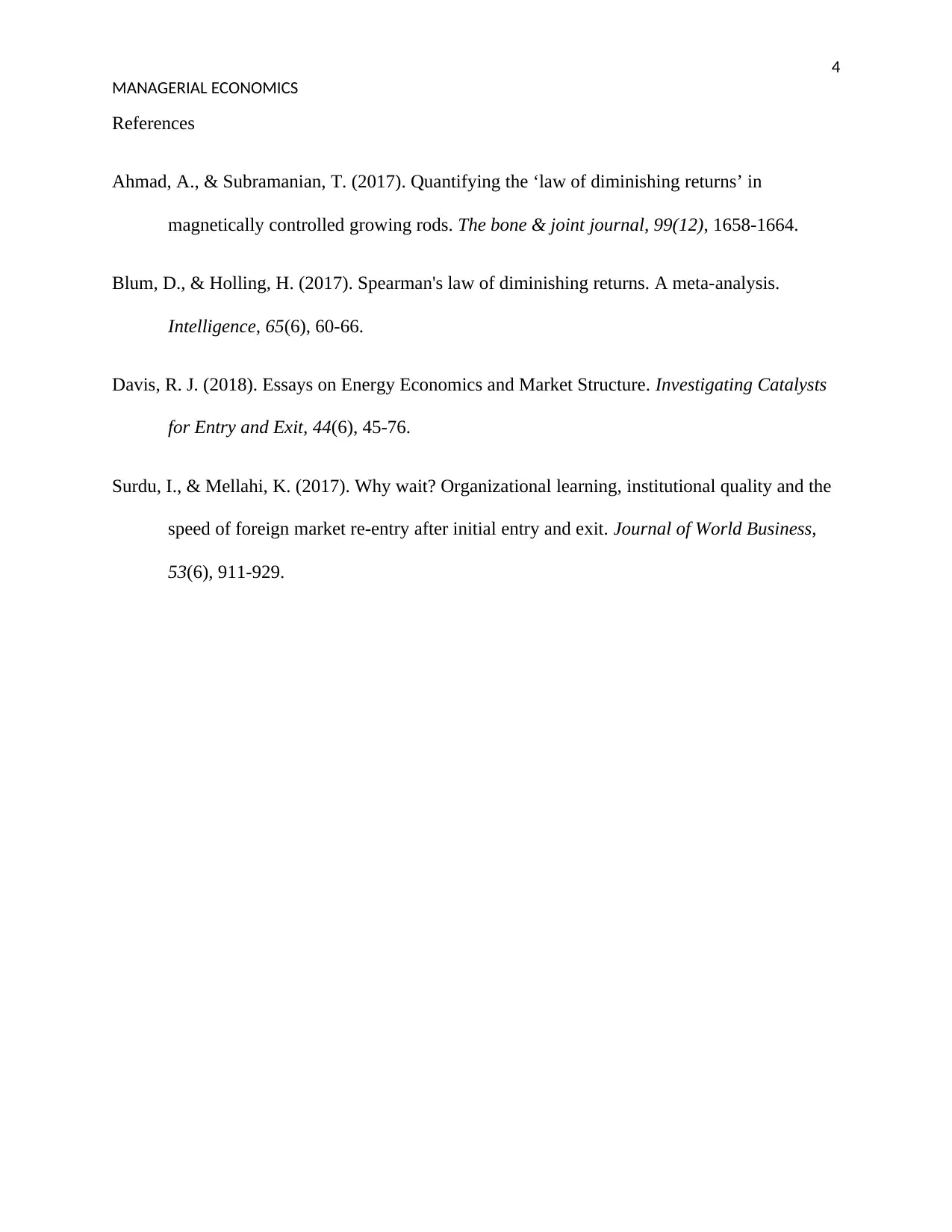BUS 505 Managerial Economics Discussion: Shutdown and Market Exit
VerifiedAdded on 2022/08/22
|4
|656
|17
Discussion Board Post
AI Summary
This discussion post delves into core concepts of managerial economics, addressing the law of diminishing returns, budget lines, and the implications of a firm's decision to shut down operations. The analysis begins by defining and illustrating diminishing returns using examples such as fertilizer use on farmland, explaining how increased input can eventually lead to decreased output. The post then explores the role of budget lines and indifference curves in determining consumer equilibrium, highlighting how consumers aim to maximize satisfaction given income constraints. Finally, the discussion examines the difference between a firm shutting down and exiting the market, including an explanation of sunk costs and their impact on short-run decisions. The post includes citations from academic sources to support its arguments.
1 out of 4







![[object Object]](/_next/static/media/star-bottom.7253800d.svg)